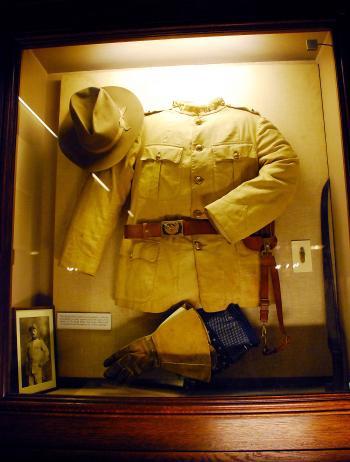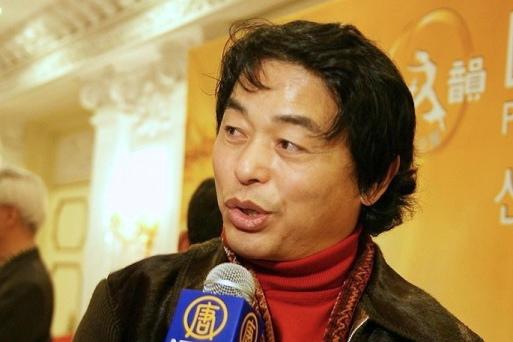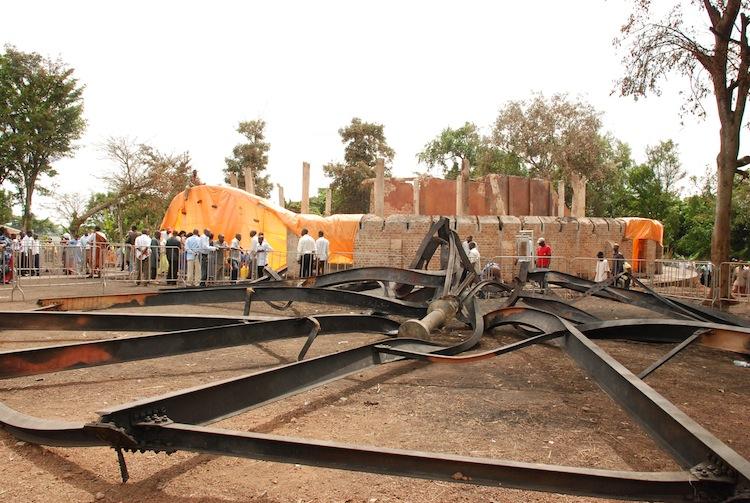NEW YORK—Not all 19th century presidents were born in log cabins. President Theodore Roosevelt (1858-1919) was born into a wealthy family in New York City, where his Victorian house still remains today.
Fondly known as Teddy Roosevelt, he was the 26th U.S. president serving from 1901 to 1909. He was also vice president to President William McKinley, a conservationist, Harvard graduate, governor of New York State, Nobel Prize recipient, explorer, author, and colonel of the Rough Riders—the First U.S. Volunteer Cavalry.
To this day, Teddy Roosevelt remains the youngest person to have ever become a U.S. president, at age 42. Roosevelt took office following President McKinley’s assassination.
But this highly accomplished man struggled in his childhood, suffering from asthma. He had to be home-schooled after missing many classes due to his ill health.
“This totally contradicts the popular perception we have of TR,” said Michael Amato, a park ranger with the National Park Service (NPS). “Because when we think of Roosevelt, the [top] two things usually are Rough Rider and big game hunter. He was this robust man, constantly out for horseback riding, ranching, swimming, tennis, jujitsu, and [was] the advocate of his ‘strenuous life.’ And then you find out he was pretty sickly and frail.”
His father, Theodore Roosevelt, Sr., built a home gym for young Roosevelt to improve his health.
“His dad was a visionary. Who would think of home fitness in the 1860’s?” said Amato, who guides tours in the house.
Many blueprints of Roosevelt’s life remain in his birthplace at 28 E. 20th Street, tucked between Broadway and Park Avenue. He lived there until he was 14 years old. The brownstone existing now was reconstructed by architect Thodate Pope Riddle, one of the first female architects in America and a survivor of the RMS Lusitania. The house has five stories, five period rooms, two museum galleries, and a bookstore.
Artifacts, including his and his family’s original clothes—many designed by Brooks Brothers, rifles, a piano, portraits, and their furniture gathered from around the world were recollected in this national historic site with advocacy from the National Park Conservation Association (NPCA), an independent organization devoted exclusively to advocacy on behalf of the National Parks System.
Roosevelt further tasted the vicissitudes of life in his adult years when both his wife, Alice Lee Roosevelt, and his mother, Mittie Bulloch, died on the same day—Valentine’s Day—in 1884. His wife passed away two days after giving birth to Alice Lee Roosevelt Longworth, Roosevelt’s oldest child.
Roosevelt asked his sister to take care of the newborn daughter and spent much of his next two years ranching in the Badlands of the Dakota Territory, where he mastered living in a saddle, driving cattle, and hunting big game. On a visit to London, he married his childhood sweetheart Edith Carow, with whom he had five children.
As Republican President of the United States, Roosevelt led Congress and the American public toward progressive reforms and a strong foreign policy.
He was the first American to be awarded the Nobel Prize, winning the Peace Prize in 1906 for mediating the Russo-Japanese War. The award is currently in the White House, and a replica is at his birthplace.
Fondly known as Teddy Roosevelt, he was the 26th U.S. president serving from 1901 to 1909. He was also vice president to President William McKinley, a conservationist, Harvard graduate, governor of New York State, Nobel Prize recipient, explorer, author, and colonel of the Rough Riders—the First U.S. Volunteer Cavalry.
To this day, Teddy Roosevelt remains the youngest person to have ever become a U.S. president, at age 42. Roosevelt took office following President McKinley’s assassination.
But this highly accomplished man struggled in his childhood, suffering from asthma. He had to be home-schooled after missing many classes due to his ill health.
“This totally contradicts the popular perception we have of TR,” said Michael Amato, a park ranger with the National Park Service (NPS). “Because when we think of Roosevelt, the [top] two things usually are Rough Rider and big game hunter. He was this robust man, constantly out for horseback riding, ranching, swimming, tennis, jujitsu, and [was] the advocate of his ‘strenuous life.’ And then you find out he was pretty sickly and frail.”
His father, Theodore Roosevelt, Sr., built a home gym for young Roosevelt to improve his health.
“His dad was a visionary. Who would think of home fitness in the 1860’s?” said Amato, who guides tours in the house.
Many blueprints of Roosevelt’s life remain in his birthplace at 28 E. 20th Street, tucked between Broadway and Park Avenue. He lived there until he was 14 years old. The brownstone existing now was reconstructed by architect Thodate Pope Riddle, one of the first female architects in America and a survivor of the RMS Lusitania. The house has five stories, five period rooms, two museum galleries, and a bookstore.
Artifacts, including his and his family’s original clothes—many designed by Brooks Brothers, rifles, a piano, portraits, and their furniture gathered from around the world were recollected in this national historic site with advocacy from the National Park Conservation Association (NPCA), an independent organization devoted exclusively to advocacy on behalf of the National Parks System.
Roosevelt further tasted the vicissitudes of life in his adult years when both his wife, Alice Lee Roosevelt, and his mother, Mittie Bulloch, died on the same day—Valentine’s Day—in 1884. His wife passed away two days after giving birth to Alice Lee Roosevelt Longworth, Roosevelt’s oldest child.
Roosevelt asked his sister to take care of the newborn daughter and spent much of his next two years ranching in the Badlands of the Dakota Territory, where he mastered living in a saddle, driving cattle, and hunting big game. On a visit to London, he married his childhood sweetheart Edith Carow, with whom he had five children.
As Republican President of the United States, Roosevelt led Congress and the American public toward progressive reforms and a strong foreign policy.
He was the first American to be awarded the Nobel Prize, winning the Peace Prize in 1906 for mediating the Russo-Japanese War. The award is currently in the White House, and a replica is at his birthplace.







